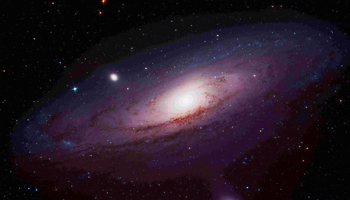The Female Galaxy is the closest spiral galaxy to the Milky Way and the largest galaxy in the Local Group of galaxies. The Yunnan Astronomical Observatory of the Chinese Academy of Sciences has learned that in the first systematic analysis of the massive eclipsing binary stars in the Andromeda galaxy, researchers at the station discovered 12 massive semi-conjunct binary stars with low-mass secondary stars filling the surrounding critical isoplanes. It reveals the existence of mass transfer from secondary stars to massive primary stars in these systems, and also shows that the binary evolution process in Andromeda is similar to the “similar” in the Milky Way.
The structural characteristics and metallicity of Andromeda are very close to those of the Milky Way. Previously, the International Photometric Sky Survey project has discovered a batch of eclipsing binary stars in this galaxy. Since Andromeda is relatively far away from humans, about 2.45 million light-years away, most of the eclipsing binaries discovered by the sky survey are massive binaries, and only a few binaries have been deorbited to determine the distance to Andromeda, while other binaries have been deorbited. Little is known.
Li Fuxing, a doctoral student from the Binary and Variable Star Research Group of the Yunnan Observatory, and researcher Qian Shengbang, their supervisor, used the sky survey observation data of the 2.5-meter telescope on La Palma Island, Spain, to analyze 437 eclipsing binary systems, and some high-precision light The photometric de-orbiting research was carried out by changing the curve, and their basic photometric parameters were obtained. In-depth study found that the secondary stars of 12 binary stars are filled with the Roche lobe of the surrounding critical equipotential plane, while the main star and the Roche lobe are separated, revealing that they are massive semi-conjunct binary stars, and there are in the system from the secondary star to the Roche lobe. Material transfer between massive host stars.
The study also found that there may be a correlation between the fullness of the main star of these binary stars and the mass ratio of the system, which further supports that they have undergone mass ratio inversion and are in the stage of slow material exchange and evolution. In addition, the temperature distributions of primary and secondary stars in these binary systems are similar to the distribution of semi-contiguous binary stars in the Milky Way, which means that the evolution process of binary stars in Andromeda is similar to that in the Milky Way, which is of great importance for exploring the evolution of material exchange in massive binary stars. the value of. This result has been published online in the international astronomical academic journal “Astronomy”




GIPHY App Key not set. Please check settings